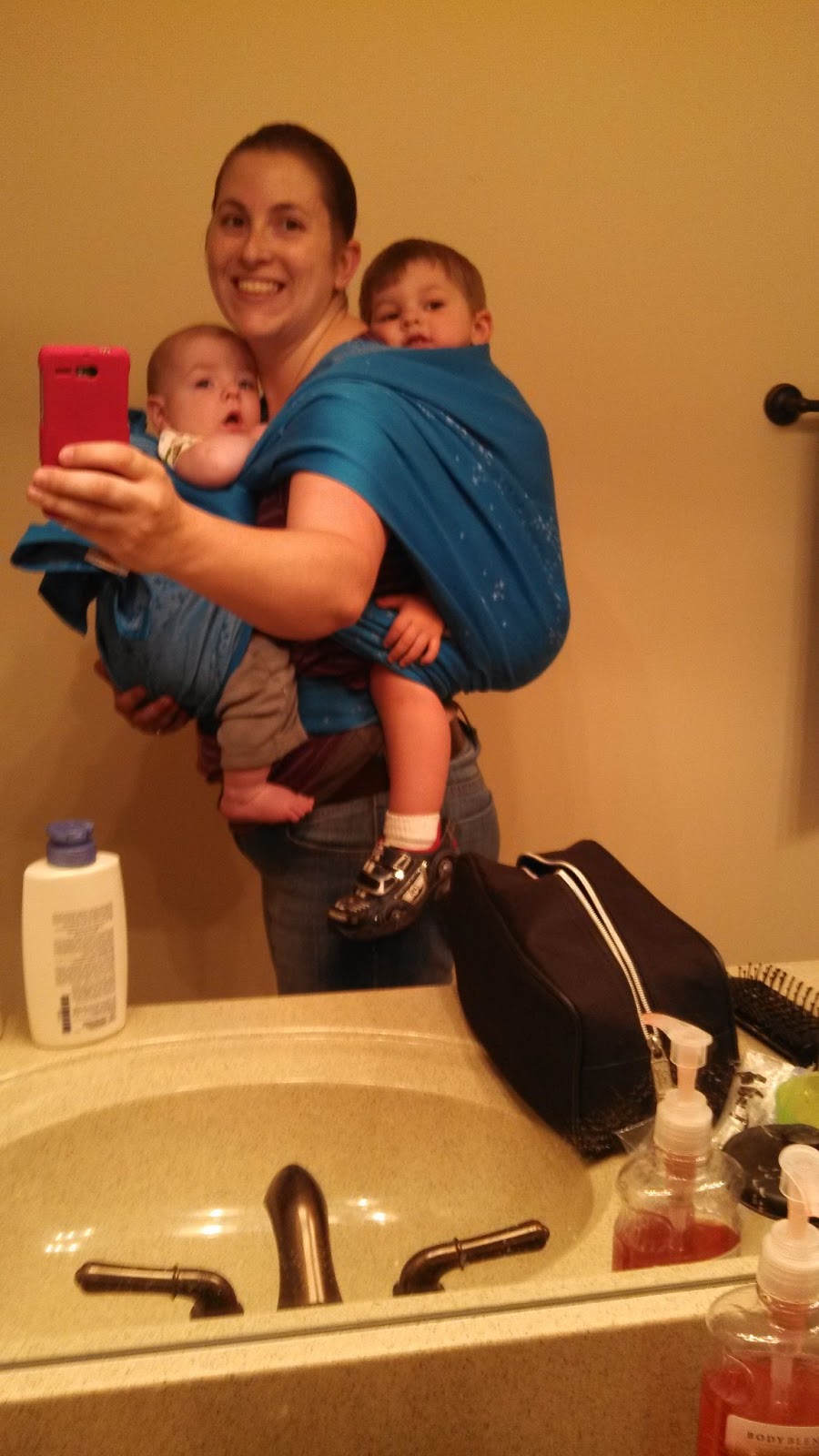Double Hammock is a double pass carry that can be made a wiggle proof carry, and has many variations for tying off. You can do ruck straps, tie it with a ring, do a knotless tie with two rings, tie Tibetan, candy cane chest belt...use your imagination. The video I'm going to post shows both the ruck strap variation and using a single sling ring to tie off. I'll post videos later for some of the other variations. You can do this carry in a wrap as short as a 3, but most people seem to prefer a 6. This video shows it done with a Natibaby size 6 Tanami. Remember, the key to this carry is the L pull. It gets everything nice and tight. Also, make sure that you are tightening your chest pass as you go...start at the top, pull the middle, then pull the bottom. Do this before you make your second pass, then do your L pull, and you should be nice and tight. I've heard people say when baby grunts during the L pull, it's right where you want it. :)
So check out the video, give it a go (or two...or five), and don't be afraid to post pictures to my Facebook page: www.facebook.com/babywearingmum Also, if you've got specific questions or are struggling with something, feel free to send us a message. Happy babywearing!
Double Hammock
And for those who have difficulty loading the videos:
Right, so you'll start off with your middle marker.
You want to start this carry off center, so take your middle marker and put it in the center of your chest.
Now reach round to the center of your back and mark that spot on your wrap.
The mark from your back is where you'll be starting this carry.
Put your mark in between baby's shoulders...
And get baby up on your back however is easiest for you
Secure your top rails, and make your seat. Spread the fabric knee to knee,
and tuck it up under his bum so that's secured between your bodies.
You'll want your shorter rail to be going over your shoulder,
and the longer rail to go under the other. Secure the short rail between your knees.
Bring the long tail round in front, and pass it under the short rail. Pull it tight.
Adjust top, middle, and bottom of your chest pass here so that you are starting off nice and tight.
Pull the long rail round the back and make your second pass. Pull it up nice and high.
Make a second seat, spreading that pass from knee to knee and tucking it up under baby's bum.
Now you have both ends coming over your shoulders, with everything nice and tight.
Take the short rail and pull it straight up, maintaining your tension.
Take the second tail, and pull it out to the side. Give it a good pull and a bounce.
Keep tightening (some people say when baby grunts, you know you're good).
Keep your tension. Secure one tail between your knees.
For a wiggle proof carry, take the second tail over baby's leg...
...under his bum, and under the second leg. Hold this tail between your knees and grab the other.
Again, go over the first leg with your tail and under the second leg.
Secure with a double knot. That's a ruckstrap variation.
If you've picky shoulders like me, you can try a sling ring chest style.
Grab an extra sling ring. (I use a size large.)
Thread your tail through the ring before you do your wiggle proof passes. Pull it tight until the ring is in a comfortable position for you. I've found that it lays flatter if I thread the first tail through going up and the second tail going down. (If that doesn't make sense, PM me on Facebook, and I'll try to help.)
Again, secure each tail and make your wiggle proof passes.
Check your seat.
And knot it off at your waist.
.png)
.png)
.png)
.png)
.png)
.png)
.png)
.png)
.png)
.png)
.png)
.png)
.png)
.png)
.png)
.png)
.png)
.png)
.png)
.png)
.png)
.png)
.png)
.png)
.png)
.png)
.png)
.png)
.png)
.png)
.png)
.png)
.png)
.png)

.png)
.png)
.png)
.png)
.png)



.jpg)






